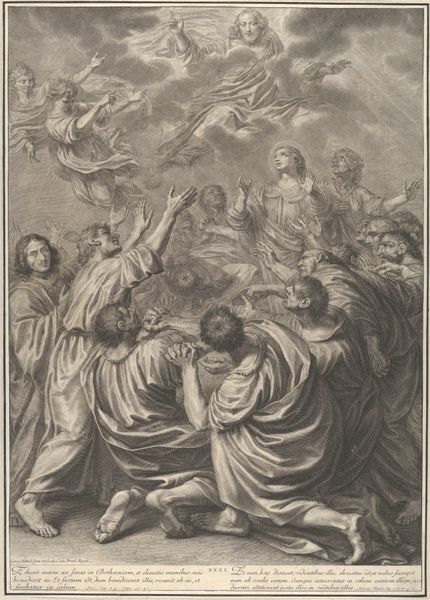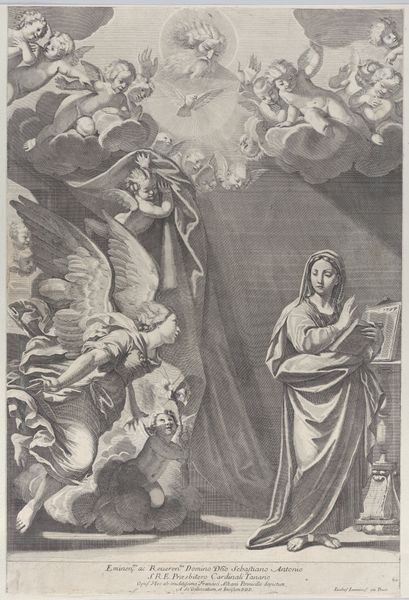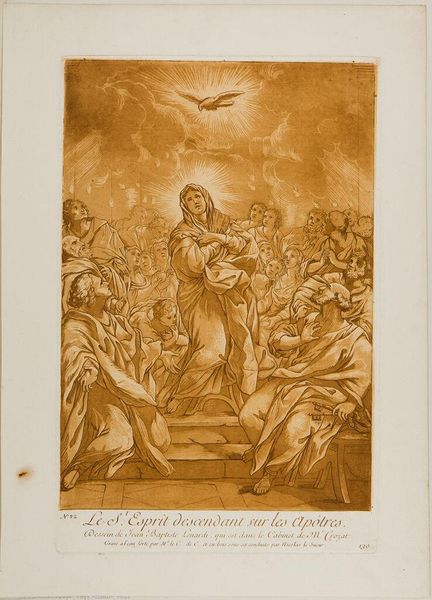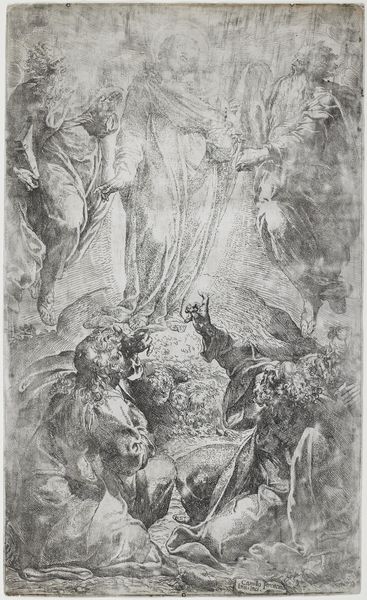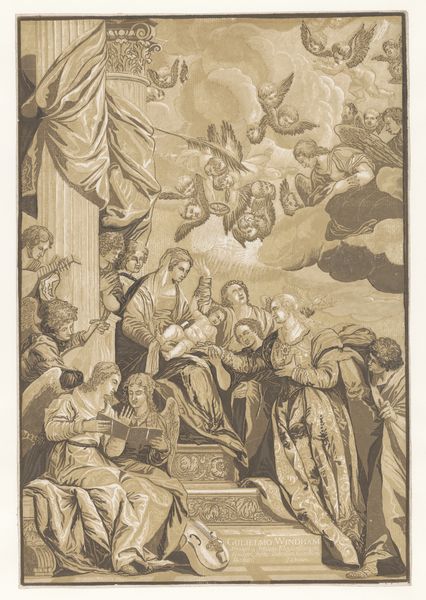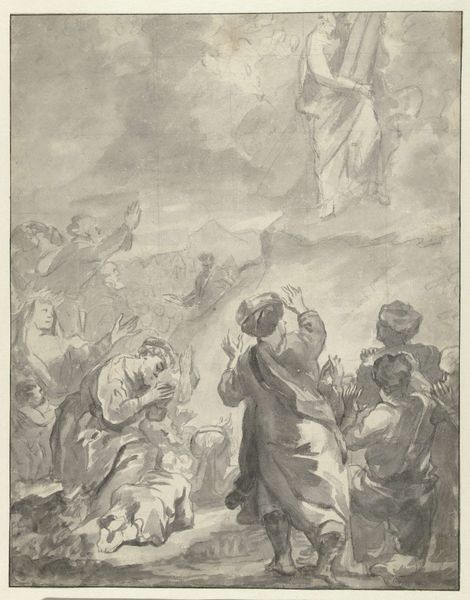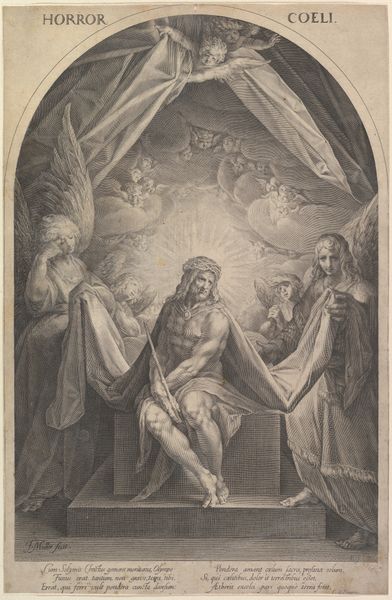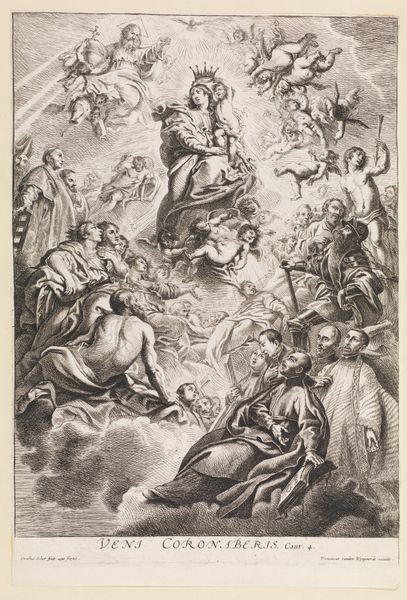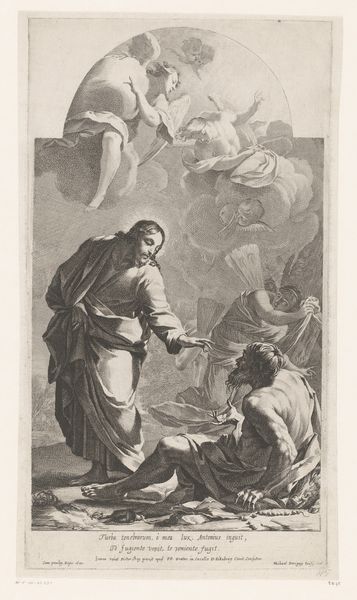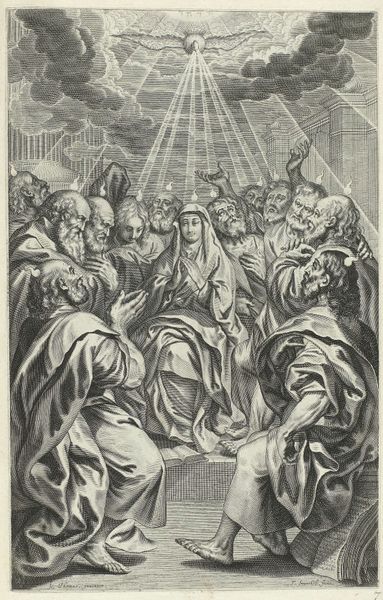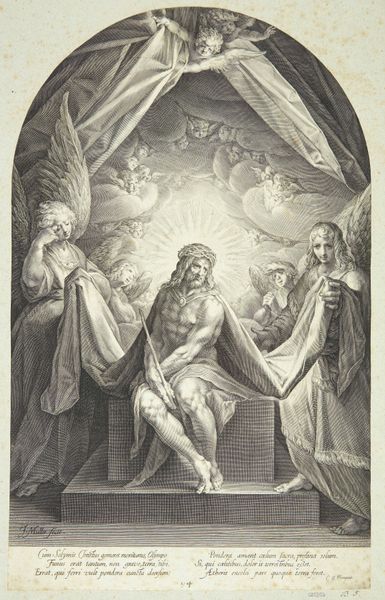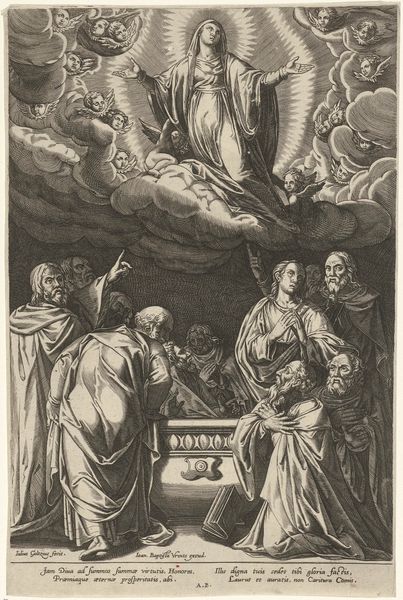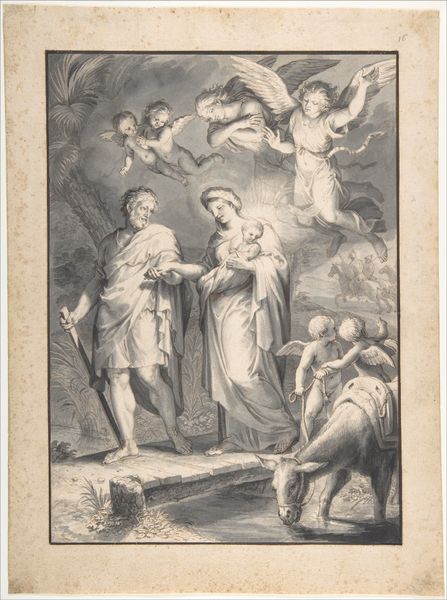
The Pentecost, with the Virgin standing at center, the Holy Spirit above, and Apostles on both sides 1724 - 1734
0:00
0:00
drawing, print
#
drawing
#
baroque
# print
#
figuration
#
history-painting
Dimensions: Sheet (Trimmed): 15 9/16 × 9 7/8 in. (39.6 × 25.1 cm)
Copyright: Public Domain
Editor: This drawing from the early 18th century, "The Pentecost" by Anne Claude Philippe Caylus depicts the Virgin Mary and the Apostles, with the Holy Spirit descending above them. It feels quite classical in its composition, but the expressions are so dramatic. What catches your eye when you look at this work? Curator: Immediately, I consider how Caylus, working within the Baroque style, engages with power dynamics through a religious lens. Note the positioning of the Virgin – central, elevated. How does this reflect the evolving role of women, particularly within religious iconography, during a time of shifting social structures? Consider, also, the representation of the Apostles, a diverse group, yet positioned in ways that reinforce hierarchy. What narrative is subtly being woven here about collective power and individual agency? Editor: So you see the composition itself as a kind of statement about power and social roles? Curator: Precisely. And it's crucial to remember that Caylus was not merely depicting a biblical scene; he was participating in a visual discourse about faith, authority, and community. The Pentecost, in this light, can be viewed as a pivotal moment—a transition, a re-negotiation of roles. How might contemporary viewers, particularly those marginalized by dominant religious narratives, interpret this image? What dialogues does it spark about access to power, and who gets to interpret divine will? Editor: That's fascinating. I hadn't considered how the historical context really influences the way we see those figures, even in a religious setting. Curator: Exactly! It challenges us to interrogate whose voices are amplified and whose are silenced, both within the artwork and within the broader socio-political landscape it reflects. By looking at art through this lens, we can see the intersections between faith, power, and representation more clearly.
Comments
No comments
Be the first to comment and join the conversation on the ultimate creative platform.
